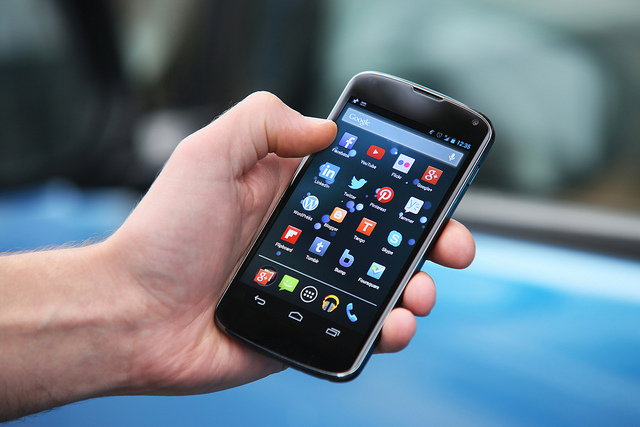Clever Ways to Reduce Your Mobile Data Charges
Aug 21, 2014 21:55
About ten years ago, you wouldn’t see many people walking around with a smartphone or tablet device. Such technology was in its infancy, and most people used their computers at work or home to go on the Internet.
Fast forward to 2014, and you can’t walk past anyone in the street that isn’t glued to their Apple iPhone or other brand of smartphone! At school, our children are using tablets as learning aids rather than battered old textbooks from decades ago!

flickr
Because of the fast-paced modern world that we live in, we can use those devices with high-speed Internet access. 4G or “LTE” is quite a recent development in the mobile telecoms world.
It makes us want to use our mobile devices more each day. Going on YouTube and watching HD videos is no longer an issue. Viewing emails with large file attachments are now the norm. Even downloading app updates is fast.
We are only allocated a specific amount of data bandwidth to use each month. If we go over those limits, we get charged extra in our monthly bills. The thing about mobile devices is that some apps or functions get configured to stay online. They do that so your mobile device can receive the latest news or updates for various things.
It’s those updates that eat up your monthly mobile data allowances! Here are some clever steps you can take to lower your data usage, so that your mobile device doesn’t cost you a fortune to use each month:
Be sure to disable mobile data when you are in a Wi-Fi zone.
Some updates can be over several hundred megabytes. That’s not good if your mobile data allowance is only 500Mb, for example!
An example of that is the built-in Mail app. Enable the settings to download new messages only when you open the app.
I hope these tips have been useful to you. Thanks for reading!
Fast forward to 2014, and you can’t walk past anyone in the street that isn’t glued to their Apple iPhone or other brand of smartphone! At school, our children are using tablets as learning aids rather than battered old textbooks from decades ago!

flickr
Because of the fast-paced modern world that we live in, we can use those devices with high-speed Internet access. 4G or “LTE” is quite a recent development in the mobile telecoms world.
Why we love using the Internet on our mobile devices
4G offers speeds that are comparable to our home broadband connections. We no longer have to wait for web pages to download, or emails to send. High-speed Internet access is here, and growing numbers of us are using it every day!It makes us want to use our mobile devices more each day. Going on YouTube and watching HD videos is no longer an issue. Viewing emails with large file attachments are now the norm. Even downloading app updates is fast.
What we don’t love about mobile Internet
But there is one downside to the growing success of high-speed mobile Internet: the cost. It doesn’t matter whether we have pre-pay or post-pay mobile contracts with service providers.We are only allocated a specific amount of data bandwidth to use each month. If we go over those limits, we get charged extra in our monthly bills. The thing about mobile devices is that some apps or functions get configured to stay online. They do that so your mobile device can receive the latest news or updates for various things.
It’s those updates that eat up your monthly mobile data allowances! Here are some clever steps you can take to lower your data usage, so that your mobile device doesn’t cost you a fortune to use each month:
Switch off mobile data
Let’s face it; when you are at home or work, you are going to use an available, and free, Wi-Fi connection. If you walk around to a part of your home or office with poor Wi-Fi reception, your device will switch to mobile data.Be sure to disable mobile data when you are in a Wi-Fi zone.
Only update your device over Wi-Fi
Is your device telling you that there are some operating system or app updates available for download? If so, make sure that you only download them over Wi-Fi.Some updates can be over several hundred megabytes. That’s not good if your mobile data allowance is only 500Mb, for example!
Restrict background updates
Smartphones and tablets can sometimes download data without your knowledge. In your device’s settings, make sure that it is set not to perform any background updates.An example of that is the built-in Mail app. Enable the settings to download new messages only when you open the app.
I hope these tips have been useful to you. Thanks for reading!







































































